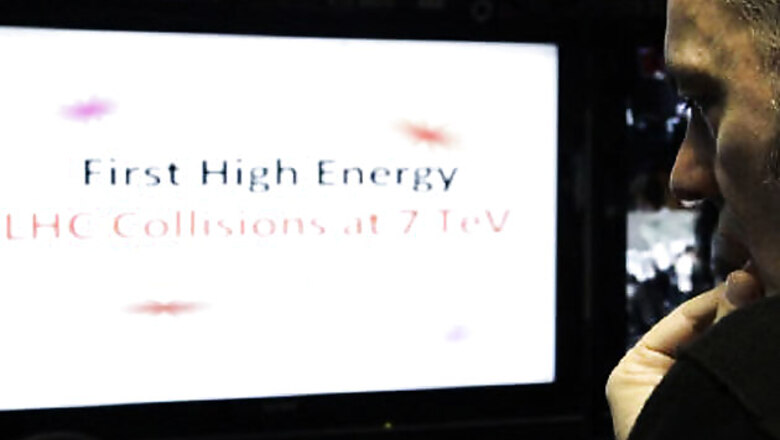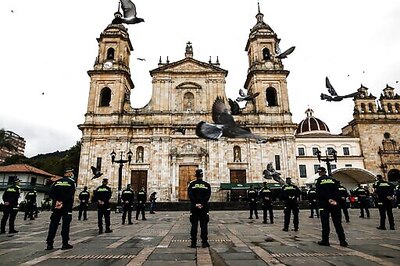
views
Geneva: Scientists smashed sub-atomic particles into each other with record energy on Tuesday, aiming to recreate conditions just after the Big Bang that gave rise to the universe 13.7 billion years ago.
The experiment at the European Centre for Nuclear Research (CERN) drew applause from the 80 scientists in the tracking room at the sprawling research complex on the French-Swiss border.
"It just shows what we can do in pushing knowledge forward on where we came from, how the early universe evolved," CERN Director-General Rolf Heuer said.
The collisions, the high point so far of the 10 billion Swiss franc ($9.4 billion) experiment, which will continue for years, marked a significant step forward for physics and could be seen as a giant leap for mankind, he said, speaking in a video relay from Tokyo.
CERN's Large Hadron Collider (LHC), the world's biggest machine, slammed beams of particles together at a record collision energy of 7 tera-electron volts (TeV) or seven billion billion electron volts -- three and a half times faster than previously achieved in a particle accelerator.
STEP INTO UNKNOWN Data from the collisions over the coming years will be analysed by thousands of scientists around the world linked by a computer network known as the Grid to gain insights into the nature of matter and the origins of stars and planets.
"This is a step into the unknown. We are doing something that no one has done before. We hope we find things that are really new," said CERN research director Sergio Bertolucci.
"There are known unknowns out there, like dark matter and new dimensions about which we hope to learn. But it is possible that we will find some unknown unknowns which could be hugely important for mankind. With the LHC, we have the tool that we need." The collisions took place at a nano-fraction of a second slower than the speed of light in the LHC's 27 km (16.8 mile) tunnel about a hundred metres (330 feet) below ground.
CERN scientists expect the project to lift the veil on some of the mysteries of the cosmos -- how matter was converted to mass after the fireball of the Big Bang and what is the dark, or invisible, matter that makes up an estimated 25 per cent of the universe. "In the course of 2010 and 2011 we will be compiling the data and we expect to make real discoveries," Oliver Buchmueller, one of the key figures in the experiment, told Reuters.
"By the end of 2010 we think we will find evidence of dark material and confirmation that it is there and what it is." Buchmueller said he thought the experiment would only find the theoretical particle known as the Higgs boson after 2013, when the collider is boosted to collision energy of 14 TeV.
The Higgs boson, named after the Scottish physicist who proposed it three decades ago to explain the origin of mass in the universe, is believed to have made possible the emergence of stars, planets and eventually life from the matter that spewed out of the Big Bang.
The experiment was delayed for a few hours by technical glitches with the power supply and an over-sensitive magnet safety system.
This led the physicists to suspend the mega-power particle collisions. After the problems arose as beams were injected into the collider in the early morning, CERN officials were quick to dismiss any suggestion that it was a repeat of a major incident in September 2008 that seriously damaged parts of the experiment and delayed the full launch of the project until now.




















Comments
0 comment